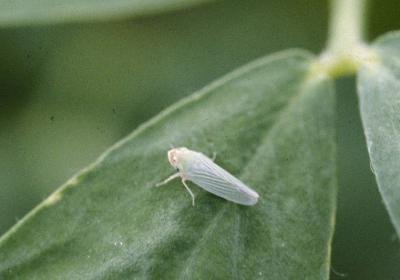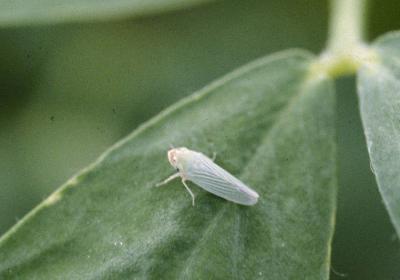

Leafhoppers or Jassids (Empoasca spp)
Adult leafhoppers are (2 to 3 mm long) and thin. The wings are held roof like over the abdomen. They are pale green to yellowish green in colour, shiny and more or less transparent. The legs are slender with bristles. The nymphs resemble the adults but are smaller and do not have fully developed wings. Adults and nymphs suck sap from the leaves, remaining on the underside during the day, but also moving to the upper surface during the evening. When disturbed they run sideways rapidly to reach a shady part of the host plant.
Feeding by leafhoppers causes discolouration, and leaf curl, the outer zone of the leaf turns yellow to reddish and whiter later. Heavy leafhopper infestation may retard plant growth and may cause severe yield losses. Cotton fields attacked by leafhoppers are easily recognisable from some distance, owing to their reddish or purple colour ("hopperburn").
- Use resistant varieties. A number of very hairy varieties have been bred, which are considerable less prone to leafhopper attack than those varieties whose leaves are not or only sparingly covered with hairs. By planting such resistant varieties damage by leafhoppers can be avoided to large extent. In Tanzania, the release of the "Ukiriguru" varieties resistant to leafhoppers and to bacterial blight played a major role in the increase in annual crop production.
- Early sowing helps if the cotton plants have past the most susceptible plant stage during the period after the rainy season, when leafhopper population is at its peak.
- Use repellent plant extracts from: neem, chilli, garlic or Lantana camara
